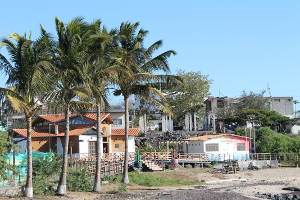Located in the vast expanse of the Pacific Ocean, the Galapagos Islands stand as a testament to the marvels of nature, with its unique blend of flora and fauna. As a volcanic archipelago located approximately 1,000 kilometers off the coast of Ecuador, this isolated terrain has not only shaped the evolutionary destiny of countless species but has also woven an intriguing linguistic tapestry over the centuries. In this article, we will learn about the Galapagos Islands Language Spanish, delving into the historical and cultural factors that have contributed to the spread of the Spanish language in this region.
The Unique Landscape:
The Galápagos Islands, known for their breathtaking landscapes and unparalleled biodiversity, have long been a haven for scientists, naturalists, and adventure seekers. Charles Darwin’s historic visit in 1835 laid the foundation for our understanding of evolution, as he meticulously observed the distinct species that inhabit this remote archipelago. The isolation of the Galápagos has not only influenced the evolution of its wildlife but has also played a crucial role in shaping the human culture and, subsequently, the predominant language spoken in the region.
Spanish Influence Through Colonization:
The history of the Galápagos Islands is deeply intertwined with Spanish colonization. While the islands remained uninhabited by indigenous populations, they were discovered by Spanish explorers in the 16th century. It was not until the 19th century, however, that the islands began to be permanently settled. Ecuador officially annexed the Galápagos Islands in 1832, and the Spanish language took root as the islands’ official language.
Ecuadorian Administration and Cultural Integration:
As a province of Ecuador, the Galápagos Islands naturally adopted Spanish as the language of administration, education, and daily communication. Throughout the years, the Ecuadorian government has enacted measures aimed at assimilating the Galápagos Islands into the national cultural framework, nurturing connections that predominantly revolve around the Spanish language. The educational system, media outlets, and official communications within the archipelago are all conducted exclusively in Spanish, solidifying and identity as an integral part of its cultural integration into Ecuador.
Tourism and Global Connectivity:
The Galápagos Islands have emerged as a global hotspot for eco-tourism, drawing visitors from every corner of the world. With tourism playing a significant role in the islands’ economy, the need for a common language became essential. Spanish, being the official language, naturally became the lingua franca for communication between locals and tourists. This interaction has not only contributed to the preservation of the Spanish language but has also led to a cultural exchange that enriches the linguistic landscape.
Conclusion:
For centuries, the world has been captivated by the awe-inspiring beauty and unique ecosystem of the Galápagos Islands. The prevalence of the Spanish language in this remote paradise serves as a testament to the historical ties with Ecuador, its colonial legacy, and the enduring impact of global tourism. Till today, The Galapagos Islands Language stands as an integral part of their identity, resonating with the rich history and culture that has intricately shaped this extraordinary archipelago.


















